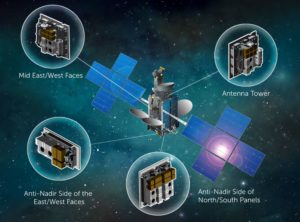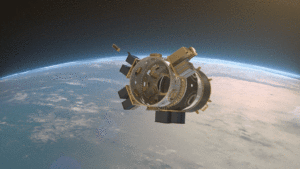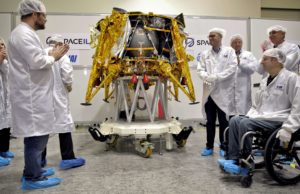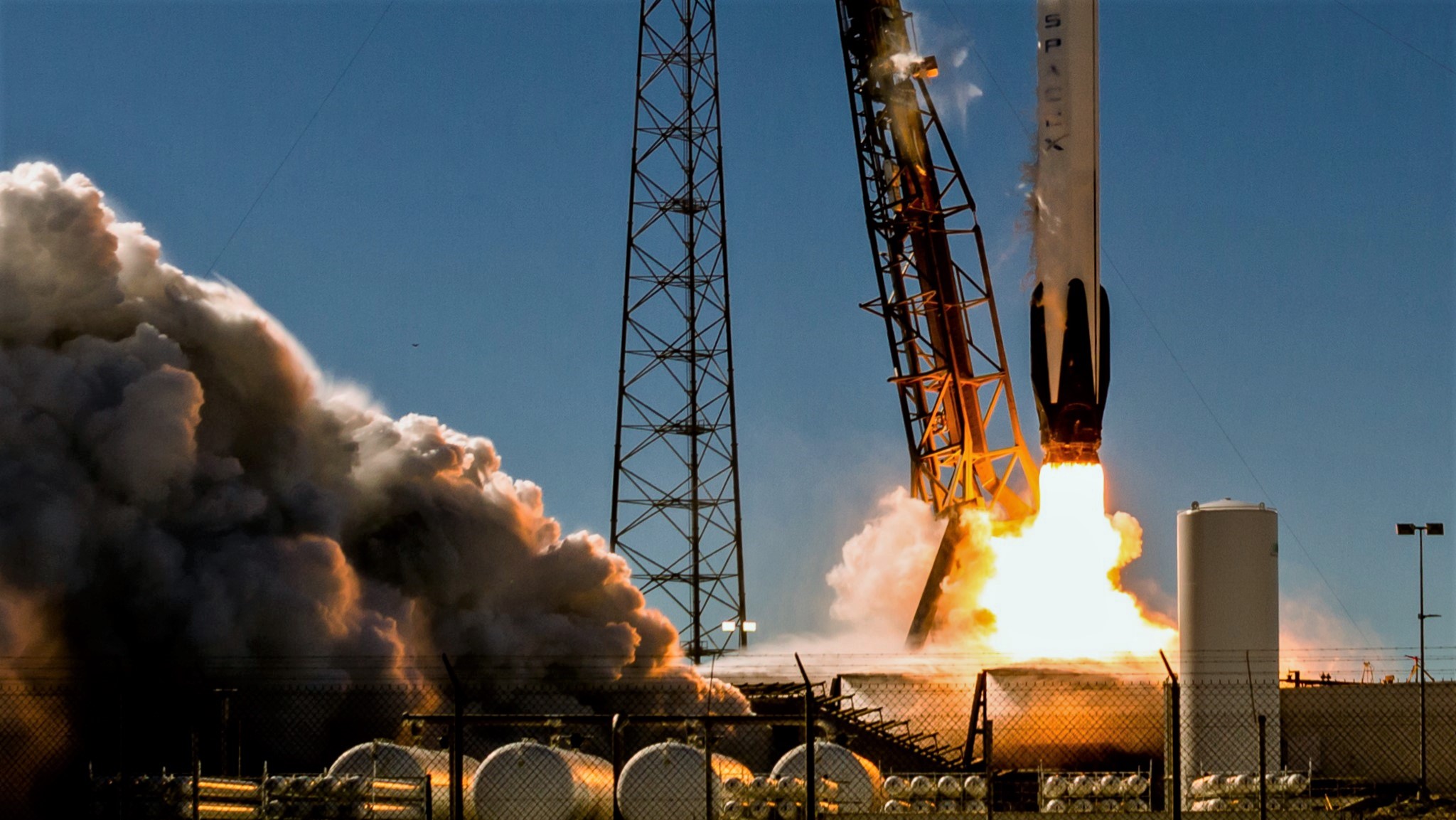
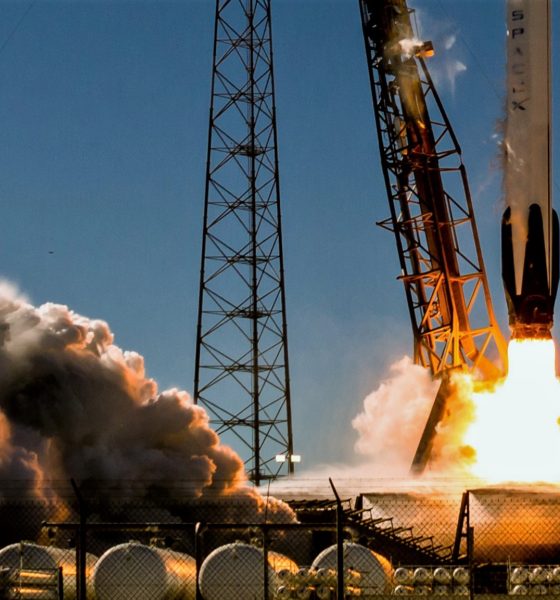
News
SpaceX nears Falcon 9’s first commercial interplanetary launch: a private Moon lander
Israeli aerospace company SpaceIL has reportedly completed the world’s first private Moon lander at the same time as the primary payload it will be tagging along with – Indonesia’s PSN-6 communications satellite – arrived in Cape Canaveral, Florida, where engineers will now prepare the spacecraft for a launch NET February 13th, 2019 atop SpaceX’s Falcon 9 rocket.
Recently crowned Beresheet (Hebrew for “Genesis”), the small ~600 kg (1300 lb) lunar lander will also be joined by an innovative new rideshare technology managed this time around by Spaceflight Industries, potentially giving small satellite (under 100 kg) customers the ability to tag along with a large geostationary communications satellite like PSN-6 to reach orbits far higher than those routinely accessible with rideshares and even dedicated launches.
The Indonesian satellite Nusantara Satu (PSN VI) has arrived at the Cape for its February launch on a SpaceX Falcon 9 (SSL Release: https://t.co/usuBQeq9Uz).
This is a shared launch with Spaceflight GTO-1/SpaceIL (Israel’s first mission to the moon): https://t.co/OvyNAc9qfP pic.twitter.com/Z8HDFDUCdX
— NSF – NASASpaceflight.com (@NASASpaceflight) December 20, 2018
While SpaceX is unaffiliated with SpaceIL, this mission will technically mark the first time that SpaceX has conducted a commercially-procured interplanetary launch, hopefully placing Beresheet (nicknamed “Berrie” by SpaceIL) on a direct trajectory to the Moon after sending PSN-6 on its way to geostationary orbit. The actual logistics of this unprecedented rideshare mission are unclear, but the most logical setup would see PSN-6 somehow integrated on top of SpaceIL’s Moon lander, allowing the communications satellite to be deployed into a geostationary transfer orbit before Falcon 9’s upper stage reignites to send Beresheet on an escape trajectory.
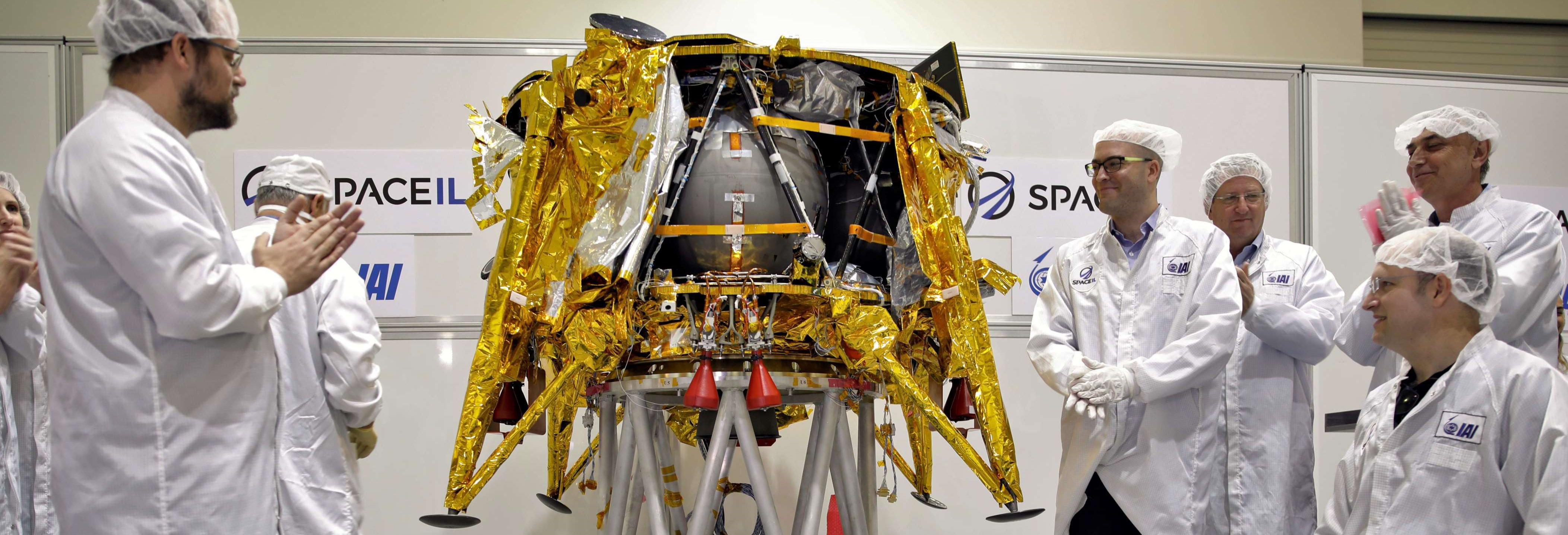
Assuming that is the case, this mission may also become the second time that SpaceX has utilized its Falcon 9 upper stage’s long coast capabilities on a commercial mission, as the rocket would need to remain operational at least several hours after deploying PSN-6 in order to reignite for Beresheet. It’s also possible that the PSN-6 satellite itself will play a role in sending Beresheet to the Moon or that the lunar lander will bring along its own boost stage to journey from GTO to lunar orbit, but both alternatives are improbable. Just last week, on December 22nd, SpaceX conducted its first true operational long-coast during the launch of the USAF’s first new GPS satellite, coasting for around 60 minutes between Merlin Vacuum (MVac) ignitions.
In February 2018, Falcon Heavy also demonstrated an even longer coast of ~6 hours during the heavy-lift rocket’s launch debut, allowing SpaceX to send Starman and his Tesla Roadster into an elliptical orbit around the sun, one end stretching out past the orbit of Mars.
- An overview of SSL’s PODS rideshare concept, showing the many possible locations where smallsat dispensers can potentially be attached to commsats. (SSL)
- Spaceflight’s SSO-A Upper Free Flyer visualized deploying cubesats shortly after launch on Falcon 9. PODS would be quite similar, albeit on a smaller scale. (Spaceflight)
- Beresheet is seen here prior to the spacecraft’s flight from Israel to Florida. (SpaceIL/IAI)
Aside from the already-unprecedented rideshare combo of a commercial communications satellite and an interplanetary spacecraft, the PSN-6 mission will further include an innovative new approach to satellite rideshare launches, potentially allowing unrelated smallsat operators the opportunity to piggyback on the commercial geostationary satellite missions that serve as a backbone of the private launch market. By piggybacking on larger satellites headed to geostationary orbit (35,786 km or 22,236 mi), smallsats may be able to reach truly unprecedented orbital heights – useful for science, commerce, and exploration – that could ultimately pave the way for independent interplanetary smallsat missions, leapfrogging off of high-energy geostationary orbits to head to nearby bodies like asteroids, Mars, Venus, and more.
There is also a chance that PSN-6 could launch on a flight-proven Falcon 9 rocket, an event that would mark the first time in history that a commercial interplanetary spacecraft reached orbit on a reused commercial rocket. Either way, FCC filings have already confirmed that Falcon 9 will attempt to land on drone ship Of Course I Still Love You (OCISLY) roughly 650 km (410 mi) off the Florida coast.
For prompt updates, on-the-ground perspectives, and unique glimpses of SpaceX’s rocket recovery fleet check out our brand new LaunchPad and LandingZone newsletters!

News
Tesla FSD earns high praise in South Korea’s real-world autonomous driving test
As per the Korea Expressway Corporation’s report, the FSD test was conducted on December 15, 2025, from 10 a.m. to 6 p.m.

Tesla’s Full Self-Driving (FSD) has received a bullish assessment from the Korea Expressway Corporation following a real-world autonomous highway driving test.
A report of the test, shared on Naver Cafe, showed high praise for the system’s safety, capabilities, smooth maneuvers, and confidence.
South Korean highway test
As per the Korea Expressway Corporation’s report, the FSD test was conducted on December 15, 2025, from 10 a.m. to 6 p.m. Four people were in the Tesla that was tested, including the head of the mobility department. All four FSD driving modes were tested, from “Sloth” to “Mad Max.”
To test FSD’s performance, the system was tasked to operate on highways such as Gyeongbu, Cheonan, and Cheonan-Nonsan, as well as city areas in Dongtan New Town, Sejong Special City, and Daejeon Metropolitan City, among others.
Since FSD is only available for the Tesla Model S and Model X that are imported to South Korea from the United States, the system was not tested in a Model 3 or Model Y, which comprise the majority of Teslas on the country’s roads today.
Highway test results
Results showed FSD performing well, both in inner-city roads and on highways. In inner city roads, the testers noted that FSD was capable of autonomous driving at a level that already exceeds that of general human drivers, except in very few areas, such as unprotected left turns and work zone intersections.
In highways, the testers described FSD’s performance as “excellent,” though the system still showed frequent cases of violations in local bus lanes and max speed limit rules. These, however, could hopefully be addressed by Tesla in a future FSD update without many issues. The testers also noted that in some parts of the test, FSD seemed to be driving autonomously in accordance with traffic flow rather than strict traffic rules.
테슬라 Fsd 고속도로 자율주행 테스트 결과 보고 by Simon Alvarez
News
Tesla claims nearly 20% market share as Norway sets new car sales record
Tesla captured roughly one in five new cars in Norway, highlighting its dominance in the world’s most EV-friendly market.
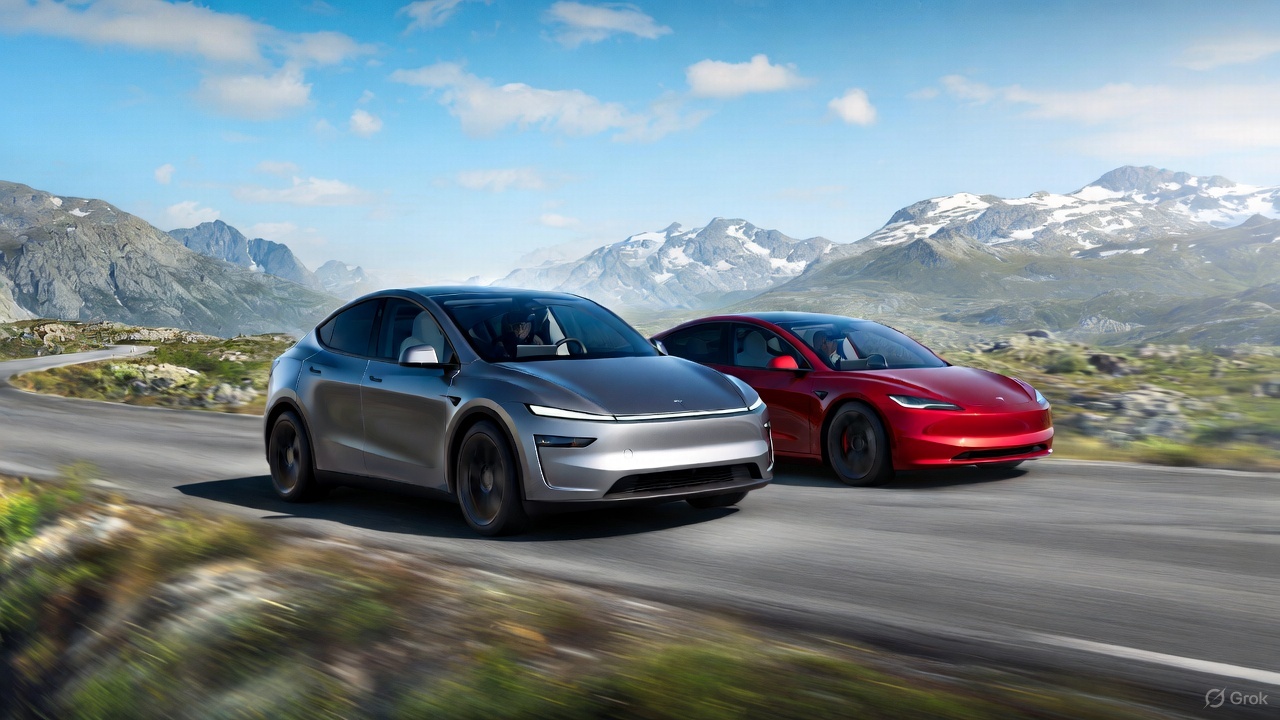
Norway shattered its all-time new car sales record in 2025, and Tesla emerged as the clear winner. A year-end rush ahead of higher EV taxes pushed registrations to nearly 180,000 vehicles, with electric cars accounting for 96% of sales.
Tesla captured roughly one in five new cars in Norway, highlighting its dominance in the world’s most EV-friendly market.
Norway’s EV rush
As noted in a CarUp report, Norway’s electric vehicle sales in 2025 surged, thanks in part to buyers rushing ahead of a post–new year VAT increase of roughly 50,000 kronor on many new electric cars. This ended up pulling demand forward and setting a national record with almost 180,000 registrations in 2025.
The result was unprecedented. From the vehicles that were sold in 2025, 96% of new cars sold were fully electric. And from this number, Tesla and its Model Y made their dominance felt. This was highlighted by Geir Inge Stokke, director of OFV, who noted that Tesla was able to achieve its stellar results despite its small vehicle lineup.
“Taking almost 20% market share during a year with record-high new car sales is remarkable in itself. When a brand also achieves such volumes with so few models, it says a lot about both demand and Tesla’s impact on the Norwegian market,” Stokke stated.
Tesla domination
Tesla led all brands in Norway with 34,285 registrations, which is equal to a 19.1% market share. These results place Tesla well ahead of Volkswagen and Volvo, which held a 13.3% and 7.8% market share in 2025, respectively.
On the model chart, Tesla’s strength was even clearer. The Tesla Model Y topped all vehicles with 27,621 registrations, accounting for 15.4% of the entire market. The Tesla Model 3 also ranked among the top five, accounting for 3.7% of Norway’s entire auto sales in 2025.
Other strong performers included Volkswagen’s ID.4 and ID.7, Toyota’s bZ4X, which commanded 4.9%, 3.9%, and 4.1% of Norway’s total sales in 2025, respectively.
News
Tesla China sees 2nd-best month ever by selling 97,171 vehicles wholesale in December
The results mark Tesla China’s second-highest monthly result on record, trailing only November 2022’s 100,291 units.

Tesla posted a sharp year-end rebound in China last month, with December’s wholesale figures climbing to their second-highest level to date.
The surge capped a late-year recovery for the electric vehicle maker, even as full-year wholesale figures still finished lower year over year. Still, the data highlights how Tesla China’s offerings still resonate with customers in the world’s most competitive electric vehicle market.
Tesla China’s December surge
Tesla China sold 97,171 vehicles wholesale in December, as per data from the China Passenger Car Association (CPCA). The results mark Tesla China’s second-highest monthly result on record, trailing only November 2022’s 100,291 units, based on data compiled by CNEVPost. The details of Tesla China’s December results, such as its domestic sales and exports, are yet to be released.
December’s wholesale results represent a 3.63% increase from the same month last year and a 12.08% jump from November’s 86,700 units. It also marked the second consecutive month of year-over-year growth, signaling renewed momentum in China.
Tesla’s late-year momentum is believed to be partly driven by Tesla pulling deliveries forward to allow buyers to take advantage of more favorable purchase tax policies before the calendar year ended. That strategy helped boost monthly performance even as competition in China’s EV market remained intense.
Tesla China’s FY 2025 volumes
Despite the strong December finish, Tesla China’s wholesale sales declined on an annual basis. The electric vehicle maker’s total wholesale figures for 2025 reached 851,732 units, down 7.08% year over year. This could have been due to a variety of factors, from intense competition in the domestic Chinese market to Giga Shanghai’s changeover to the new Model Y in the early part of the year.
Tesla Gigafactory Shanghai continues to play a central role in its global operations, producing the Model 3 sedan and Model Y crossover for both Chinese customers and export markets. The efficiency of Gigafactory Shanghai has allowed it to become Tesla’s largest factory by volume, as well as the company’s primary vehicle export hub.
